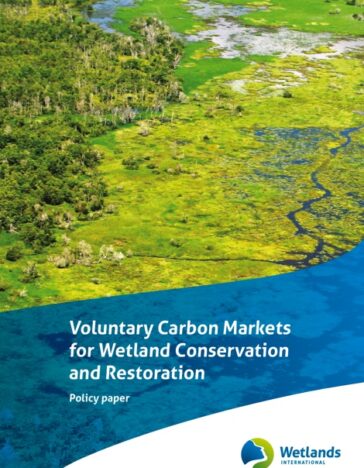The voluntary carbon market for safeguarding and restoring our wetlands
-
Climate and disaster risks
-
Climate mitigation and adaptation
Healthy wetlands store vast amounts of carbon in their soils and biomass, but they can become a huge source of emissions upon degradation. Peatlands, although covering only 3% of the world’s terrestrial area are the biggest natural carbon stores, storing twice the amount of carbon present in all forests. Mangroves typically hold five times as much carbon as a similar area of rainforest.
These habitats are at the centre of the planet’s triple crisis of climate change, biodiversity loss, and land degradation. More than two-thirds of natural wetlands have been lost or degraded, the vast majority of which has taken place over the past century. The degradation of wetlands causes unimaginable destruction of biodiversity, as wetlands contain a greater concentration of life than anywhere else. Degraded wetlands fail to sustain essential ecosystem services such as food, freshwater supply, erosion, and flood control, all vital in the context of climate change adaptation.
Upon degradation, wetlands keep on releasing massive amounts of CO2 alongside CH4 (methane) and N2O (nitrous oxide) from their soils, adding to global warming. No less than five percent of annual global emissions – more than the aviation and shipping sectors combined – come from draining and converting peatlands alone.
This makes protecting and restoring our wetlands a number one global priority. But we need the funding to do it, now.
Why carbon markets?
Governments and public financing cannot foot the bill with the urgency needed. Private sector funding must be mobilised at scale and at speed, and carbon markets offer a unique opportunity to channel domestic and international investment into wetland conservation and restoration. Nature-Based Solutions (NBS) or Natural Climate Solutions (NCS) – including peat and coastal wetland conservation as well as restoration – could generate up to 12 billion tCO2e in mitigation benefits per year. This level of supply largely meets current expectations concerning the demand from voluntary carbon markets (1.5 – 2 billion tCO2e). Voluntary carbon markets are a means of supporting nature projects that were largely ignored by the Kyoto mechanisms. They have been a model for the design of new methodologies, at times paving the way for compliance markets, in which companies and governments who are regulated by mandatory national, regional, or international emission reduction regimes can trade their emission permits (allowances) or offsets to comply with their regulatory obligations.
Social-environmental integrity is the all-decisive touchstone for climate and market success. A supply of high-quality credits which are fair, equitable, and accepted by the leading carbon credit verification bodies needs to be secured along with the responsible corporate climate action.
Wetlands International is committed to securing a transparent, equitable, and just carbon market to sustain, safeguard, and restore our precious wetlands. The following is the Wetlands International position paper on voluntary carbon markets:

